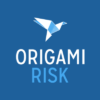What is parametric insurance exactly? And what is the difference between the more traditional way of insurance?
Alin Radu: Parametric insurance, which is something I presented during the BELRIM exchange, is simply another form of insurance. It focuses on the frequency of a predetermined or predefined event and its severity rather than post-event assessment of the actual loss incurred. The primary distinction lies in this focus, as we assess how often a specific event of a certain magnitude occurs. Based on this frequency and severity, we determine the pricing for the associated risk. For example, if we establish an index related to the magnitude of an earthquake, we can specify that if an earthquake of a certain magnitude occurs within a certain proximity to your asset, you would receive a predetermined payout. In contrast, traditional insurance would assess the damage at the site and provide compensation based on the observed damage. Parametric insurance, on the other hand, offers compensation based on predefined criteria to cover all losses sustained, regardless of the actual physical damage at the site. The key distinction lies in the scope of coverage. Parametric insurance is designed to cover various types of losses beyond physical damage, such as business interruption, loss of attraction, or expenses not covered by traditional insurance. This versatility is crucial as it addresses a wide range of potential losses that traditional insurance policies may not cover. Therefore, parametric insurance plays a significant role in filling the gaps left by traditional insurance policies.
What exactly do you insure against now?
Alin Radu: At Berkshire Hathaway Specialty Insurance (BHSI), we have a parametric product that’s called BH FASTCAT. The CAT stands for catastrophes, and FAST means there’s a FAST payout. And the catastrophes that we cover today at BHSI are earthquakes, hurricanes, and wildfires. That being said, parametric insurance can extend to weather-related risks or cyber or any other risk that can be objectively quantified with data, and has a data provider that is objective and undisputable. But our focus is earthquakes, hurricanes, and wildfires for now. And of course, we’re looking to expand. But first, we have to see where the business opportunities are before we decide to expand into a new risk. Until last year, we were only offering earthquake and hurricane. We saw the business need for wildfires, and since the beginning of this year, we have started offering coverage for wildfires because we see a lot of need in Latin America, Southern Europe, North America, and Australia.
How quick is fast?
Alin Radu: While we guarantee payouts within 30 days of receiving supporting documentation, we had a few claims in the past, and they’ve all been paid within a week. The fast payout of parametric helps the customer. It’s cash flow, right? And the fact that you have liquidity quickly means that you can start the recovery almost without delay. That is a very huge advantage that plays a role in that decision on whether parametric is worth being considered for certain catastrophes like the ones we cover.
And what are the advantages of working with parametric insurance compared to traditional insurance?
Alin Radu: Parametric insurance is helping a customer to have more comprehensive coverage, not necessarily replace the indemnity coverage but work side by side. It can work as deductible buy-downs. For example, last year we’ve seen an increase in deductibles in the market. That meant that the customer had to retain more risk, so they looked at parametric solutions to cover the larger deductibles that the traditional market would ask them to retain. That’s one option. The other option would be the excess layer. We’ve seen in certain regions and in some cases that the traditional market is not willing to offer a lot of excess capacity. As a consequence, we’ve seen accounts that are missing hundreds of millions of excess earthquake or hurricane that were excluded from the traditional coverage. And in these cases, the market started looking at these alternative risk transfer solutions, and parametric can cover that excess layer. To summarize: parametric comes in as a complement to the indemnity and it covers these exclusions, uninsurable assets, deductibles, and retentions. It covers everything that a traditional policy would exclude.
Can you give an example?
Alin Radu: Loss of attraction in the hospitality industry like hotels is a good example. This is something that traditional insurance would not cover. When a hurricane passes by, it could be that there is no damage to the hotel itself. But because of the hurricane, there are cancellations and tourists don’t show up. That would be covered by our policy because it’s a frequency coverage: there needn’t be any physical damage loss. But the hotels will have losses due to cancellations and that is a loss of attraction. And that will not be covered in traditional property because there is no property damage. Employee support is another good use case. Complex BI and CBI situations another.
Today this kind of insurance has already made its mark in the US. What about Belgium and the rest of Europe?
David Bogaert: We aim to take on a pioneering role in introducing this type of insurance or risk coverage method to the European markets. It’s noteworthy that while parametrics has gained traction in France and in the UK, it’s relatively unknown or not yet established in Belgium. This is precisely the reason why we chose this topic for the BELRIM/BHSI exchange in January: to familiarize the risk management community in Belgium with this product, especially considering the changes in the insurance landscape that request more alternative risk transfer solutions, of which parametric insurance can be one of them. We view it as our responsibility, particularly in the countries where BHSI is expanding its presence in Europe to inform brokers and the risk management community about parametric insurance. This type of insurance can complement traditional insurance policies rather than replacing them. It can serve as an add-on, providing options like deductible buyback, excess coverage, or being part of a quota share alongside traditional programs. Its purpose is not to replace traditional insurance but to offer additional support where needed.
Why do you want to grow in Europe while there are not so many earthquakes, wildfires,…here?
Alin Radu: The expansion of our presence in Europe isn’t solely focused on understanding and addressing the risks specific to Europe itself. Rather, it’s also about recognizing that many customers based in Europe have significant risks related to natural disasters or other hazards in regions like Japan or the US. These European customers may have assets spread across various locations such as Turkey, Southern Europe, the US, the Caribbean and Latin America. Consequently, they could face risks in these areas, even though they are European entities. Therefore, our assessment extends beyond regional risks to encompass global risks, considering the exposure these corporations have to the risks we’re addressing. This broader perspective adds another dimension to our analysis.
Flooding, which is a huge problem in Europe, is not covered. Why?
Alin Radu: The problem with flood or hail or other disasters is the need for the involvement of an independent objective data source. For earthquake, hurricane, and wildfire we use government-run agencies that provide these indices that the customer, the broker, any independent party like ourselves can have access to. That data needs to be very transparent, and no manipulation should be needed. Transparency is an important point of parametric insurance. Now, going back to flood, we haven’t found an agency to provide an index with which we can be comfortable as a trigger for risk-taker and which is also transparent and open. There are multiple agencies that provide sort of a footprint of a flood or depth of a flood at different locations. But the uncertainty around this data is still so high that we believe it is not, at this point, beneficial to the customer to consider parametric products for these perils. It’s definitely something that we’re actively exploring, but we haven’t got to the comfort to go to a customer and offer them a product because it may not work as expected. While for the existing product today we have the confidence that it will actually bring benefit to the customer.
How important is technology, and how will it shape parametrics?
Alin Radu: Technology is definitely very important because parametric insurance or index-based insurance is dependent on data. It needs to have this objective data to trigger a payout: like the magnitude of an earthquake or category of a hurricane or extent of fire. All this kind of information is available thanks to the technology out there, like satellites for example. And today, to answer the second part of your question, there are a lot of new startups or technology companies that come up with new solutions, new indices or new data and try to integrate this into parametric insurance solutions. Parametric insurance definitely got a push from these new startups and technology is playing a very important role in making this type of solution more visible to the outside world.
And then to conclude, I would like to ask a general question. How important will risk management become for companies?
David Bogaert: I think as there will be more catastrophes in the future, due to climate change, there is no doubt that risk management will become more important because this can have a serious impact on the assets of a company. Taking that into account it is highly likely that the capacity of the traditional insurers will be pressured. Therefore, it will be more difficult to insure those types of risks with traditional insurance. I think parametric can be a solution and will become more and more important for those risk managers to cover those risks because it can have a serious impact on that balance sheet and the sustainability of their organizations.
Alin Radu: And you see many companies that have strong risk management processes in place trying to look at a more diverse way of covering certain risks. I think risk managers are always seeking to become more knowledgeable and creative, and the same goes for brokers. But we also have the responsibility to inform the market, the brokers, and risk managers to share and explain our knowledge and introduce a new product through events like the one we had with BELRIM. Because we want the risk manager to make a well-informed decision: we want them to be knowledgeable, thoughtful and understand, without ambiguity, what they’re buying. We acknowledge very well that there is an interest there. They want to understand the product because they see it as another option of managing their risks.
David Bogaert: One of the tasks of a risk manager is to identify and define the risks that can have an impact on the balance sheet of a company. If the risk is limited the company will not go bankrupt but if a hurricane passes and your entire building is destroyed, and there is an enormous loss of income, then this can have a serious impact on the sustainability of that company. In most companies the risk manager is closely aligned with and reporting to the CFO: to protect the company against those risks, it needs to be affordable. Given climate change and increasing exposures in risk-prone areas, probably the insurance premiums to cover those risks in a traditional way will increase. So therefore, it’s our task, as Alin said, to inform them that there is maybe another solution to cover that risk in a more affordable way.
For more information, contact info@bhspecialty.com.
The information contained herein is for general informational purposes only and does not constitute an offer to sell or a solicitation of an offer to buy any product or service. Any description set forth herein does not include all policy terms, conditions and exclusions. Please refer to the actual policy for complete details of coverage and exclusions.






